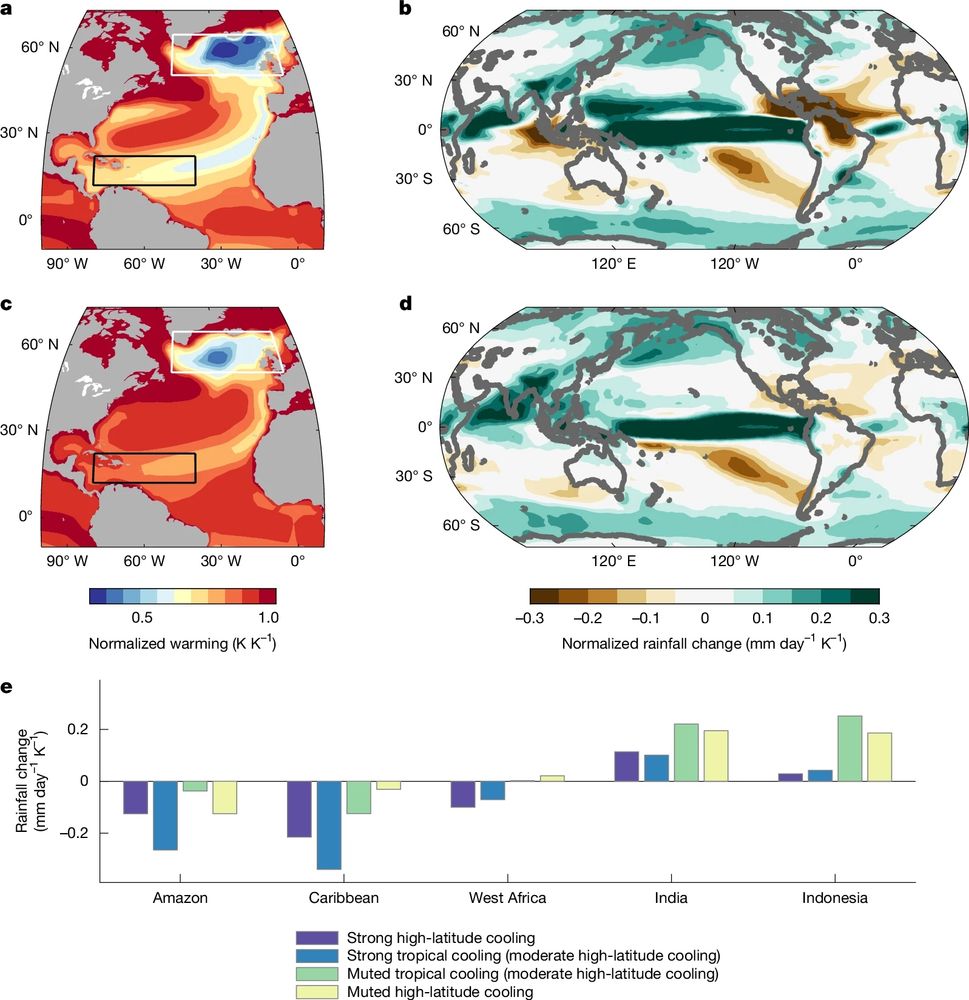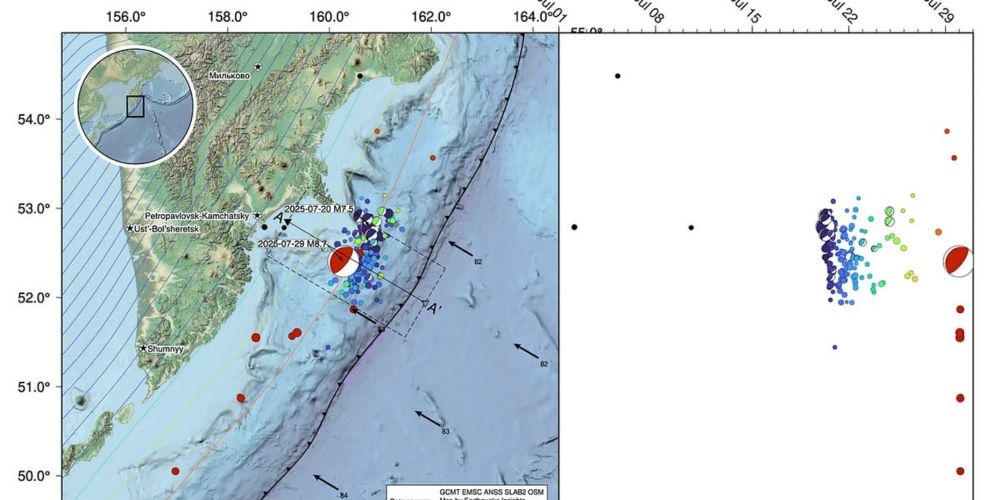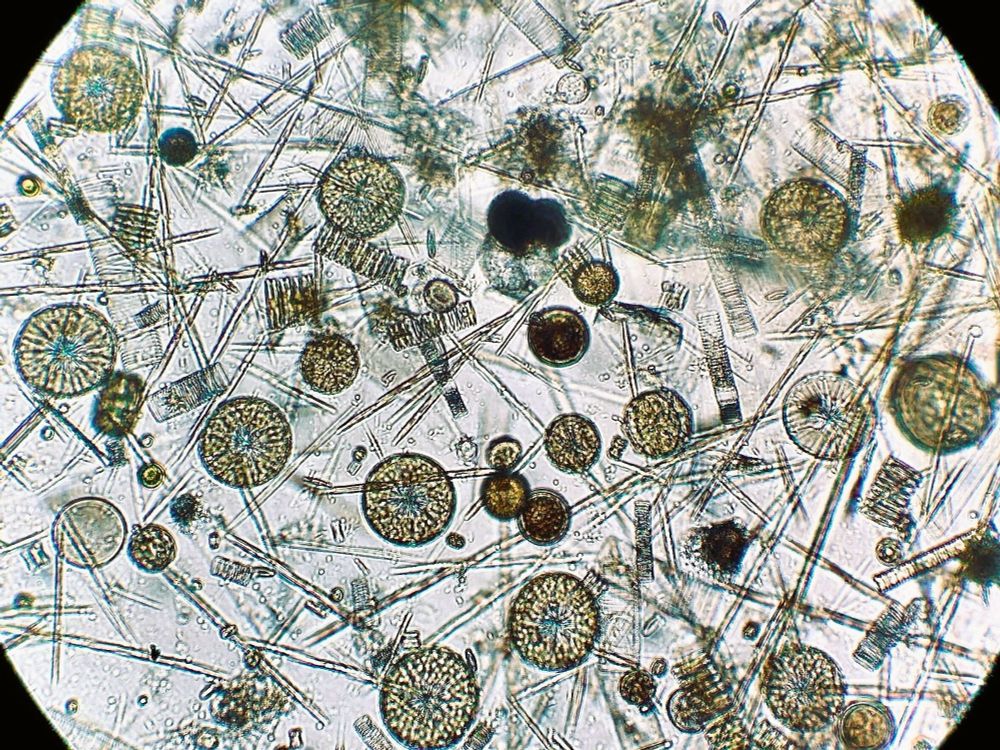
Cillian Murphy: I have ROMO: Relief Of Missing Out
Immediately adding this into my lexicon.
07.09.2025 00:07 — 👍 6713 🔁 1510 💬 45 📌 194

New study illuminates how diatoms thrive in—and light up—the Southern Ocean
An area of the remote Southern Ocean that's long confused ocean color satellites by reflecting large amounts of turquoise-colored light appears to be full of silica-rich diatoms, according to a new st...
🌊 New study reveals that silica-rich diatoms, not coccolithophores, drive bright satellite signals south of the Great Calcite Belt in the Southern Ocean
Diatom frustules mimic calcite reflectance; reshaping how we interpret ocean colour, plankton biogeog and carbon export
phys.org/news/2025-08...
05.08.2025 19:44 — 👍 17 🔁 5 💬 2 📌 0
This surprisingly relaxing footage is from SIX MILES under the ocean – and it’s the deepest ecosystem yet discovered
31.07.2025 15:38 — 👍 14303 🔁 3451 💬 437 📌 533

a–e, Twenty-first century projections according to models with strong cooling over the tropical North Atlantic (a,b) compared with the models with cooling restricted to the high latitudes (c,d). e, Rainfall response averaged over key regions in which the tropical cooling pattern produces drying or a more muted rainfall increase. The high-emission projections used in the analysis were obtained from phases 3, 5 and 6 of the CMIP as described in the Methods. The strong and muted tropical cooling responses are based on the magnitude of sea-surface temperature change over the tropical North Atlantic (80° W–40° W 12° N–22° N) relative to the surface temperature change over the tropics (30° S–30° N). The strong and muted high-latitude cooling responses are isolated based on the magnitude of sea-surface temperature change over the North Atlantic (60° W–0° 50° N–65° N) relative to the surface temperature change over the Northern Hemisphere (0°–90° N). Surface temperature and rainfall changes are computed for each individual model as the linear trend from 2021 to 2100, normalized by the magnitude of tropical mean surface warming over the same interval, and then composited based on the North Atlantic cooling responses described above.
Another "it's all connected" when it comes to Earth systems: slow down circulation in one part of the ocean, reduce rainfall in other parts of the planet. 🧪🌊
Link: www.nature.com/articles/s41...
31.07.2025 07:06 — 👍 81 🔁 28 💬 1 📌 1

M8.8 earthquake strikes offshore Kamchatka
A dangerous subduction megathrust ruptures once again
⚒️ 🧪
A M8.8 earthquake just ruptured the subduction zone offshore Russia’s Kamchatka peninsula. This is one of the world’s truly huge earthquakes, and a triggered tsunami is currently traveling across the Pacific ocean.
This same fault ruptured on July 20th in a M7.4, and last August in a M7.1.
30.07.2025 04:05 — 👍 176 🔁 89 💬 2 📌 9

2025 has seen the second warmest first half of the year on record after 2024 – and is on track to be the second or third warmest year since records began in 1850. My latest State of the Climate report over at Carbon Brief: www.carbonbrief.org/...
29.07.2025 23:23 — 👍 225 🔁 130 💬 8 📌 9

Shifting foundations of the Antarctic food web - AAPP
“We may be witnessing a fundamental reorganisation of life around Antarctica": study tracks change in polar phytoplankton
🌊 “We may be witnessing a fundamental reorganisation of life around Antarctica. Tiny algae at the base of the Antarctic food web are changing in ways that could ... alter how the ocean helps regulate our climate.” — Dr Alex Hayward
▶️ aappartnership.org.au/shifting-fou...
25.07.2025 09:37 — 👍 27 🔁 21 💬 1 📌 3

Giving bluesky a try! I'm Doms, a recent PhD graduate from the University of Toronto, and I'm currently a postdoc at the same uni; my dissertation focused on the response of coccolithophores to abrupt climate change in the past 😁
I also like potatoes
23.07.2025 23:19 — 👍 23 🔁 2 💬 1 📌 0
Assistant Professor of Biology at Boston University ::: Science Journalist / Communicator ::: National Geographic Explorer
IPC7 - The 7th International Palaeontological Congress
🗓️ When? 30 November – 3 December, 2026
📍Where? Cape Town, South Africa
👇More info in our web
https://www.ipc7.site/
Designer/Artist https://nasibov.me
Stable & clumped isotopes, caves, karst, past climate, permafrost, continental climate change & society, Asia, Siberia, environmental monitoring, head of the NICEST lab, Berliner at heart - Slava Ukraini 🇺🇦💙💛
🚀 Launched in February 2018
🌐 Connecting early-career paleoscientists and researchers
🌎 Part of the @pages-ipo.bsky.social
🦕 Account run by the SC members
www.pastglobalchanges.org/ecn/intro
Comics by Jorge Cham: Oliver's Great Big Universe, Elinor Wonders Why, ScienceStuff and PHD Comics
Organic geochemist with a special love for XL lipids and mass spec at Royal NIOZ, Texel, NL. Mom. Swim coach. She/her.
Geography Prof of tephra at Uni Cambridge. Thinks & teaches about Quaternary environments, volcanic ash and field/lab skills. She/her. 🧪🌍🌋⚒️
PhD candidate in Geography, University of Cambridge, United Kingdom / (Crypto-) Tephra, Quaternary climate and environment
Scientist and communicator. Geoscientist/Palaeontologist. she/her. My views are my own.
Paleoecologist using the past to understand the future. Forams are the best! Associate professor at Texas A&M in College Station teaching about fossils and Earth’s deep past.
Official daily update on atmospheric CO2 levels in the post-400 ppm era from Scripps Institution of Oceanography's iconic Keeling Curve.
Ocean modeller and marine geochemist at University of Bern. Interested in ocean physics/chemistry and climate change of the past and future.
Geochemistry/Paleoclimate, Research Scientist @ LSCE/IPSL, Paris
Occasional climate scientist, diagram monkey, probabilistic historian, science anti-communicator. All views and opinions are my own. This is not, sadly, a promise of novelty: it’s a disclaimer. He/him. https://www.jkclimate.fr/
Asst Prof SUNY ESF + #newPI of the PhycoSymbiosis Lab. Fan of microalgae, cell culture & trace metals. Swammer, cat person, #NeurodiverseSquad 🧪🌊🪸🧫🐈🏊🏽♀️
https://phycosymbiosis.weebly.com/
@cnrs-insu.bsky.social researcher at @climatecerege.bsky.social.
Using biomarkers to study climate, ocean, and environment of the past.
@icta-uab.bsky.social alumna.
ORCID: https://orcid.org/0000-0002-3047-6064
🇫🇷 -> 🇪🇸 -> 🇫🇷
BlueSky account of ERC-funded project DISPERSAL, focusing on understanding past sweepstakes dispersals in the geological record.
More info: https://tinyurl.com/DISPERSAL-ERC-en (English)
https://tinyurl.com/DISPERSAL-ERC (French)
I am a climate scientist, focused on paleoclimate, sea level change and the evolution of Quaternary glaciations.
I reconstruct ice sheets using glacial isostatic adjustment and ice sheet modelling. In Japan but have been all over the place. 🇨🇦🇯🇵🇦🇺🇩🇪🇸🇪
 21.09.2025 16:57 — 👍 0 🔁 0 💬 0 📌 0
21.09.2025 16:57 — 👍 0 🔁 0 💬 0 📌 0








